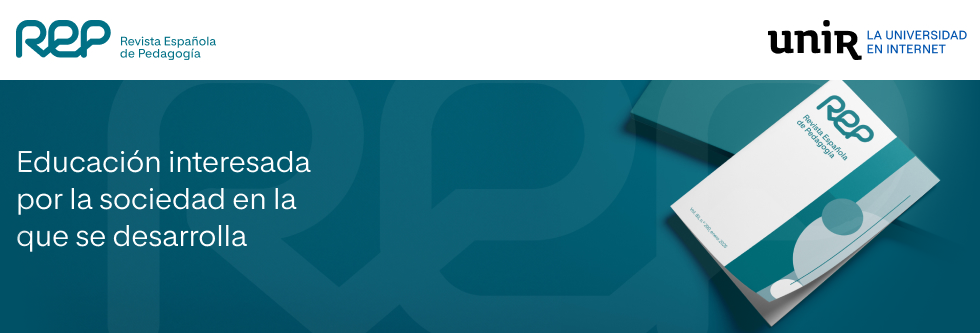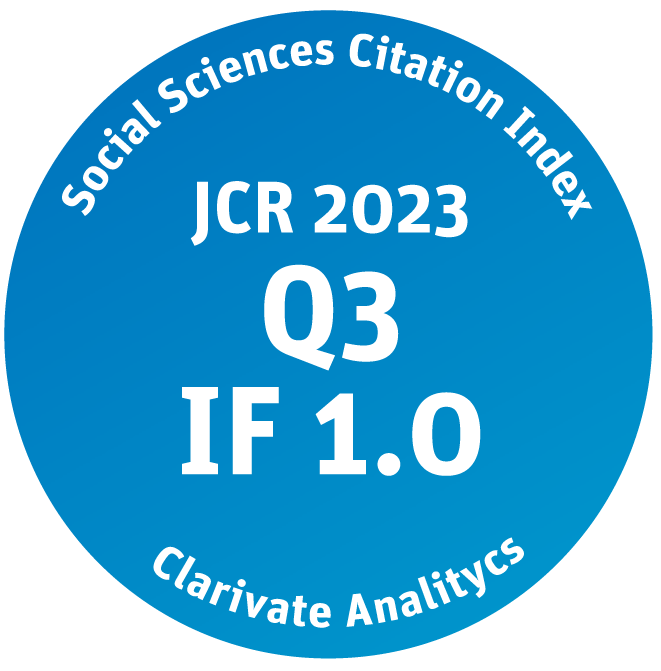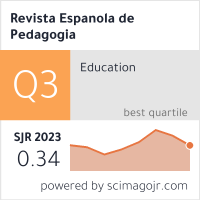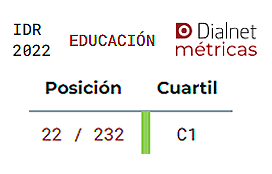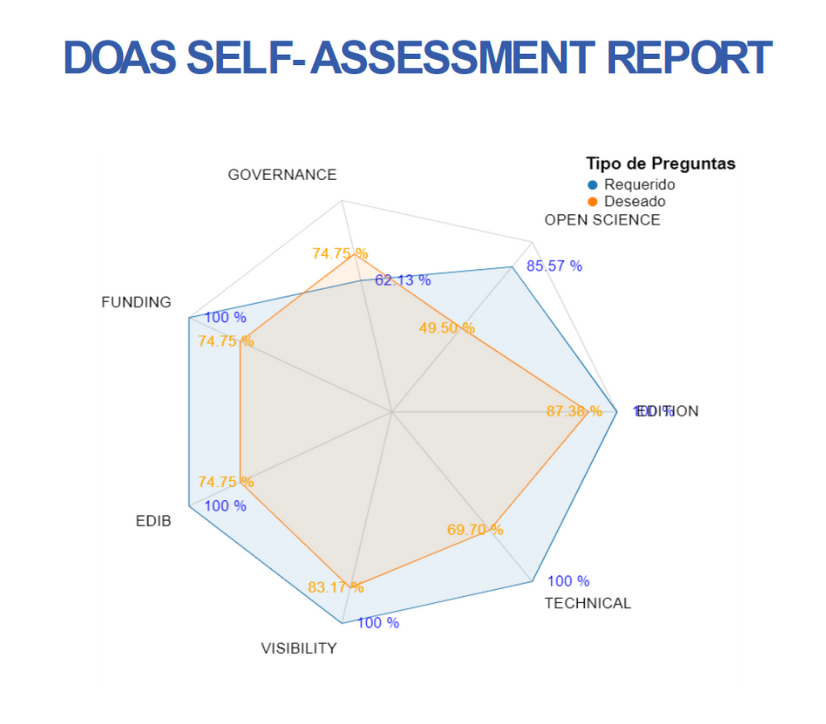Introduction: Educational and civic-penal responses to antisocial behaviour
Abstract
When a call for papers on the subject of “Educational and civic-penal responses to antisocial behaviour” was announced on the revista española de pedagogía’s website, the response from scholars of pedagogy of this subject, which has received little attention in the field of education, could not have been predicted. The reaction was positive, and original submissions arrived from Colombia, Spain, and Portugal, reflecting the interest and concern in offering ideas and solutions from a pedagogical perspective to the many problems which arise in our time and which jeopardise peaceful human coexistence, affecting so many innocent victims.
This monographic issue, which, obviously, can only include a small number of articles, brings together the eight works whose treatment of the proposed topic seemed most significant. It is well known that in the more advanced societies it is common practice to make integrated proposals when imposing punishments so that victims are taken into account throughout all of the legal-penal process as well as offenders so that offenders are encouraged to make personal and social changes beyond the habitual —and necessary— punitive measures. Both approaches involve increasing citizens’ participation in the way society responds to antisocial behaviour. In the first case, the victims of an offence are offered the chance to participate in all of the legal steps while also receiving the assistance necessary to feel they have been heeded and cared for —not forgotten— by the system and institutions. In the second case, offenders are offered the chance to participate in a personal and social change which involves adopting values to modify lifestyles which are damaging for others and for themselves, and it goes beyond regarding the humanisation of punishment from the narrow perspective of just improving the material conditions of time spent in young offenders’ institutions or in prison.
That said, where public participation regarding antisocial behaviour must particularly increase is in the prevention of it. And we should all feel involved in this. The group of social sciences dedicated to studying the origin and maintenance of this behaviour already has a reasonably precise knowledge of the different variables. These, firstly, tend to correlate with fixed patterns of undesirable behaviour, then with antisocial behaviour, and, finally, with offending (dysfunctional families, educational failure, early school leaving, consumption of alcohol and other drugs at an early age, untreated childhood psychological disorders, and idleness linked to illegal activities carried out in gangs) (Bevilacqua, Hale, Barker, & Viner, 2018; Moffitt, 1993, 2018). As we have said, we are all involved, not just because, as is normal, it is held that all adults should act as educators in their immediate environment, but because the idea of prevention reaches its precise pedagogical meaning when we recognise that we cannot form a society if only the presence of adult subjects is considered. Children must be considered, but not just, as is often suggested, by letting them speak, opening up spaces for participation, and voicing their rights, but above all by protecting them as this, in point of fact, is the best form of prevention. And the best form of prevention, from an educational perspective, is to impose limits. Therefore, it is not surprising that most of the texts in this edition focus on questions relating to minors and, in particular, to problems resulting from violence, from misuse of cyberspace, from the risk factors associated with being imprisoned, and even from the frequent and premature use of lies.
We now briefly outline the articles in this issue, in the order they appear. The article by D. Reyero and F. Gil Cantero entitled “Education that limits is education that frees” comes first given its foundational character. In it they set out to show that limits, norms, and rules are fundamental in education because they form an essential part of reality and of the human condition.
The article by M. J. Bernuz and E. Fernández entitled “The pedagogy of juvenile justice: a child-friendly justice” asserts that a model of punishment for minors, which is essentially educational and, above all, responsibility oriented, is required, and that there is a need for appropriately trained professionals who can promote young people’s participation in the procedures associated with all of the legal process.
The text by M. Martins and C. Carvalho, with the title “What do teenagers lie about?”, builds on the fact that when adolescents resort to lying, it tends to be associated with risk behaviour and so understanding the situations that trigger the use of lies by adolescents can actively help prevent antisocial behaviour.
The work by I. Méndez, C. Ruiz, J. P. Martínez, and F. Cerezo, “Cyberbullying according to sociodemographic and academic characteristics among university students” establishes that observers stand out among the roles of people involved, followed by aggressors and victims, it also shows the relationship between having been the target, agent, and observer of cyberbullying. The high level observed in two variables, being female and aged under 20, is especially interesting.
The article by J. R. Agustina and I. Montiel called “Educational challenges of merging risks in cyberspace: foundations of an appropriate strategy for preventing online child victimization”, based on analysis of the specific forms of cybervictimisation, offers guidelines based on criminological research and on the most common victimisation processes in the settings where young people live their lives, so that they can be used for designing educational programmes intended for parents, educators, and potential victims.
The text by M. Garmendia, E. Jiménez Iglesias, and N. Larrañaga Aizpuru entitled “Bullying and cyberbullying: victimisation, harassment, and harm. The need to intervene in the educational centre” claims that it is necessary to intervene in the school environment to minimise the effect of bullying as this is the main setting where it takes place. Among other matters, it concludes that cyberbullying is strongly shaped by age, increasing in line with it, and that most bullies have previously been victims of bullying.
The contribution by A. Rosser and R. Suriá, “School adaptation and behavioural and emotional problems in minors exposed to gender violence”, concludes that behavioural and emotional problems associated with performance and school adaption issues are present in most of the young people they analysed who were in reception centres after their mothers suffered situations of gender violence.
Finally, the article by F. T. Añaños-Bedriñana, M. Melendro, and R. Raya, “Young women with protective and judicial measures and their transit towards prison”, hows the following risk factors in the women investigated: low educational levels, family members or partners who have spent time in prison, addictions —principally drugs and alcoholism—affecting them or family members, and large numbers of reports of abusive treatment when they were minors.
I would like to thank the director of the revista española de pedagogía, Professor José Antonio Ibáñez-Martín, for inviting me to edit this monographic issue and for sharing the desire for educators and different institutions to know how to adopt the best educational and civic-legal responses to antisocial behaviour.
Referencias | References
Bevilacqua, L., Hale, D., Barker, E. D., & Viner, R. (2018). Conduct problems trajectories and psychosocial outcomes: A systematic review and meta-analysis. European Child & Adolescent Psychiatry, 27 (10), 1239-1260. doi: 10.1007/s00787-017-1053-4
Moffitt, T. E. (1993). Adolescence-limited and life-course-persistent antisocial behaviour: A developmental taxonomy. Psychological Review, 100 (4), 674-701.
Moffitt, T. E. (2018). Male antisocial behaviour in adolescence and beyond. Nature Human Behaviour, 2, 177-186. doi: http://doi.org/10.1038/s41562-018-0309-4
Citación recomendada | Recommended citation
Cantero, F. G.
(2019)
.
Introduction: Educational and civic-penal responses to antisocial behaviour.
Revista Española de Pedagogía, 77(273).
https://www.revistadepedagogia.org/rep/vol77/iss273/17
Licencia Creative Commons | Creative Commons License
Esta obra está bajo una licencia internacional Creative Commons Atribución-NoComercial 4.0.
This work is licensed under a Creative Commons Attribution-NonCommercial 4.0 International License
